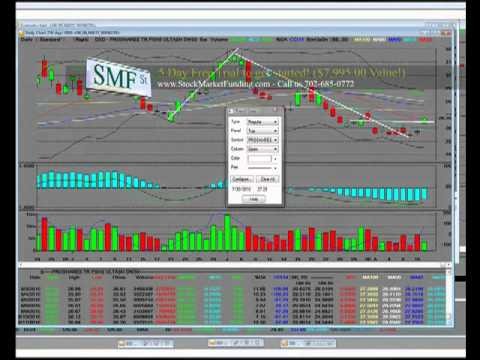ProShares Adds Leveraged Breakeven Inflation ETFs
Post on: 22 Июнь, 2015 No Comment

ProShares continues to beef up its lineup of alternative ETFs, recently rolling out a pair of products that offer leveraged exposure to breakeven inflation. The new ETFs will deliver 3x and -3x daily leveraged exposure to indexes comprised of both long and short positions in ten-year bonds, with the goal of giving investors tools for betting on changes in the markets expectations for inflation. The new ETFs are:
- UltraPro 10 Year TIPS/TSY Spread (UINF ): This ETF is linked to the Dow Jones Credit Suisse 10-Year Inflation Breakeven Index, a benchmark that consists of a long position in 10-year TIPS and a short position in Treasuries of the same duration. UINF seeks to deliver daily changes that correspond to 3x the daily change in that benchmark.
- UltraPro Short 10 Year TIPS/TSY Spread (SINF ): This ETF shoots for -3x daily exposure to the same benchmark, effectively giving investors a long position in Treasuries and a short position in TIPS.
UINF can be expected to perform well when TIPS outperform plain vanilla Treasuries, which would generally occur when inflation estimates are revised higher. SINF will move in the opposite direction, allowing investors to bet on declines in expected inflation.
ProShares had previously launched two breakeven inflation ETFs focusing on longer-dated securities. The 30 Year TIPS/TSY Spread (RINF ) offers exposure to an index comprised of a long position in 30-year TIPS and a short position in 30-year Treasuries, while FINF offers -1x daily exposure to that index. Those ETFs, which debuted in January, generally exhibit very low volatility given the inclusion of both long and short positions. The new 3x and -3x products figure to deliver a bit more volatility.

Better Than TIP?
Inflation is always a major concern for investors, and the current environment has done little to ease those worries. The last several years have seen the development of a number of different exchange-traded products designed to combat rising prices, including the new offerings from ProShares. These ETFs can be viewed as alternative to the various funds in the Inflation-Protected Bonds ETFdb Category. which generally consists of traditional long only exposure to TIPS. Led by the Barclays TIPS Bond Fund (TIP ), the 12 TIPS ETFs available to U.S. investors have aggregate assets of more than $25 billion.
Because the principal value of TIPS adjusts based on reported changes in the Consumer Price Index (CPI), these bonds have historically been the default choice for protecting portfolios against inflation. But as many investors have noted, there are some potentially serious flaws with TIPS in that role. Like all bonds, TIPS are impacted by movements in interest rates; increases in the benchmarks controlled by the Fed tends to have an adverse impact on bond prices. Because interest rate hikes often accompany rising inflation, it is not uncommon to see bonds perform very poorly in inflationary environments, even when the principal amount adjusts with CPI [see Inflation ETF Special: 25 Ways To Fight Rising Prices ].
The lineup of inflation-focused ETFs from ProShares includes both long and short positions, which essentially strips out the interest rate risk and leaves only the spread in yield between two generally similar asset classes. Breakeven inflation refers to the markets expectations for what inflation will be in the future, as measured by the difference in yield between Treasury Inflation-Protected Securities (TIPS) and traditional Treasuries. If the markets expectations for the future rate of inflation increases (e.g. inflation is now expected to be 5% compared to 3% annually), the price of TIPS will climb relative to the price of otherwise similar Treasuries that do not adjust the principal amount based on inflation.
Many investors carefully watch 10 year breakeven inflation but have not had access to a liquid and transparent way to act on their views, said Michael L. Sapir, Chairman and CEO of ProShare Advisors LLC. Now, for the first time, investors can try to take advantage of swings in 10 year inflation expectations with an ETF.
[For updates on all new ETFs, sign up for the free ETFdb newsletter ]
Disclosure: No positions at time of writing.














